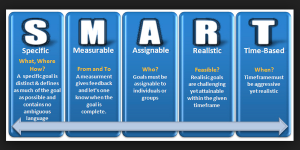
This is the second post in my series about the pros and cons of different approaches to building a field team for Retail Merchandising. If you are a manufacturer in the Consumer Packaged Goods industry, then you know that a major piece of your product’s success is based on how well it is presented in retail to differentiate from competitors and appeal to consumers. I’ve written about the 3 F’s of successful retail execution; making sure that your product is Fresh, Featured, and can be Found by consumers. I’ve also shared my opinions about how to manage some of the challenges associated with the accountability of Retail Execution teams, the importance of measuring performance, and analyzing data from the field. This series focuses on the various methods for building and managing a field team to accomplish your retail execution goals.
Last time I covered four leading approaches at a high level: In House Full Time, In House Part Time, Broker/Distributor, and Third Party. This time we’ll focus in more detail on leveraging the merchandising services that are provided by distributors or brokers. These organizations specialize in building relationships with retailers for the purpose of gaining distribution through their stores for CPG products, and already have ‘feet on the street’ to deliver on those core services. Many of these organizations also provide field teams to manage their clients’ products on the shelves of the retailers they service.
There are three key factors that are cited as making a partnership with your distributor for merchandising a smart move: Economies of scale, Focus and, Relationships.

Economies of Scale
According to Jerry Reda, COO at Big Geyser, one of New York’s largest independent non-alcoholic beverage distributors (and a Repsly customer), “Big Geyser manages the distribution of several brands in the region that we cover. This gives us the economies of scale that are needed to build, manage, and train a team of merchandisers that can provide full and deep coverage in the retail outlets that we serve. Most suppliers can’t budget for a well-trained team that gives them the coverage they need to be successful, but we can.”
This sums up the most common reason why suppliers initially explore leveraging their distributors’ teams for managing presence on the shelf. According to NACS/Nielsen, there are over 150,000 convenience stores in the US. That is an average of 3,000 convenience stores in every state, and that is just one channel for consumer goods distribution. When a supplier decides to build a team, and starts to calculate how many field reps they will need to cover even one state (It would take 13 reps to visit each of these stores once/month assuming 10 visits/day/rep), they quickly realize that the labor expense alone (roughly $ 75,000) to cover one channel in one state could be overwhelming. Brokers can drastically reduce this expense by leveraging the fact that they already have reps in the field visiting these stores. In some cases, the distributor reps who are taking orders are also performing merchandising services, while in others (such as Big Geyser), there is a dedicated team of merchandisers. These reps can put their hands on several brands on the shelf in a single visit, and the overhead of travel between stores, schmoozing the store manager, and taking care of administrivia can be spread across multiple suppliers.
On the downside, if a rep is working several products in each visit, the time that they spend focusing on the growth of your product may be watered down, inasmuch as a good quality merchandising job needs to take more than a few minutes.
Focus
Which brings us to the next point. Brokers and Distributors focus on relationships in the field, and providing key services at the shelf (ordering, delivering, restocking, & merchandising). This focus means that they have both the infrastructure and the experience to hire, train and, manage their field teams. These factors are often overlooked by suppliers, and getting them right can be difficult, time consuming and, expensive. Reda says, “Since distribution management is our core business, we know how to execute in the field. Suppliers focus on creating and producing high quality product, we focus on delivering high quality services at retail.” To this point, there are many business consultants who believe that companies should ‘Outsource everything that isn’t core’ in order to become truly great at their primary function. Building a layer of field management, establishing training programs, and managing the hiring and churning of field representatives can be a significant distraction from the primary business of creating a great product that consumers will love.
Some will argue that this is exactly the reason why field work should not be outsourced… that excellence at retail execution is so critical to the success of a product (particularly new brands and products in highly competitive categories) that the manufacturer should put a major focus on this piece of the business. We’ll explore this part of the argument in part four of this series.
Relationships
Finally, brokers and distributors often make a compelling case around the value of the relationships that they bring to the table, and how these relationships can be leveraged to enhance a product’s success in retail. Reda points out that since Big Geyser represents so many of the leading beverage brands in the region that they cover that, “we carry more weight with retailers, and our reps can impact promotions in the store more effectively than reps that represent just one brand.”
An individual supplier, for example, may move 10 cases of their product through a particular store in a given month, while a distributor like Big Geyser may move 100 cases through the same store. They may also have two or even three different reps (Sales, Delivery, and Merchandiser) come through the store each week, where the smaller supplier may have a single rep perform all three functions. This relationship of people and bigger business gives the distributor more leverage when negotiating product placements and in store PoP marketing. A distributor rep driving hundreds of dollars’ worth of margin through a store may have a much louder voice when selling in a dump display near the register than that of a small supplier driving only tens.
On the down side, a distributor that represents 10 products can’t push for your product above the others they carry on every visit, and may even be reluctant to ever favor one competitive product over another, while a rep that is working for a single brand may fight much more fiercely to beat every other brand on the shelf.
Summing it Up
Suppliers are lucky to have great choices when building their field teams. Partnering with a broker or distributor to provide merchandising can be an excellent option, particularly if you are trying to get to scale quickly. They have ready-made teams with the infrastructure and processes to give you instant coverage of vast territories, and the know-how to do a good job out of the gate, and can be much more affordable than building your own team. These pros can be quite compelling, and for many companies outweigh the benefits of having their own dedicated merchandising team. Over the next couple of weeks I’ll dig into some of the compelling reasons to consider the other approaches to building a successful field team, and if you’d like to reach out to Jerry Reda from Big Geyser for any reason, you can reach him at jerry.reda@biggeyser.com.
This is the second post in my series about the pros and cons of different approaches to building a field team for Retail Merchandising. If you are a manufacturer in the Consumer Packaged Goods industry, then you know that a major piece of your product’s success is based on how well it is presented in retail to differentiate from competitors and appeal to consumers. I’ve written about the 3 F’s of successful retail execution; making sure that your product is Fresh, Featured and can be Found by consumers. I’ve also shared my opinions about how to manage some of the challenges associated with the accountability of Retail Execution teams, and the importance of measuring performance and analyzing data from the field. This series focuses on the various methods for building and managing a field team to accomplish your retail execution goals.
(279)








